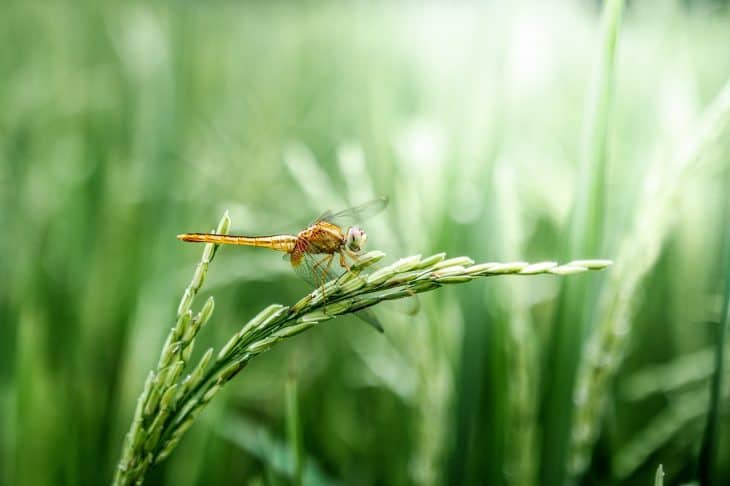
Dragonflies have been on the Earth long before humans. Although they are not the strongest insects around, their versatility and resiliency kept them in the game of life. Thus, they became the symbol of transformation, change, and adaptability in some cultures. Take a closer look at this amazing insect with these dragonfly facts.
- In general, the adult dragonfly has a lifespan of 6 months.
- There are over 5,000 species of dragonflies.
- Dragonflies measure 1 to 4 inches long.
- Dragonflies have a thorax, abdomen, and six legs.
- They have transparent wings, long bodies, and large eyes.
- The scientific name of the dragonfly is Anisoptera.
- Dragonflies belong to the ‘Odonata’ family of flying insects.
- ‘Epiprocta’ and ‘Zygoptera.’ are the two common groups of insects.
- Dragonflies are placed in the suborder ‘Epiprocta’ which is classified as; bigger, their eyes are together, and the are wings are spread upwards.
- Meanwhile, the ‘Zygoptera’ are much smaller, with eyes further apart, and their wings along the body at rest.
- Dragonflies eat other insects such as midges, mosquitoes, butterflies, moths, and even smaller dragonflies.
- Although they have six legs, most dragonflies can barely walk.
- A dragonfly can take flight at 100 kilometers per hour.
- Dragonflies can fly backward with the same strength as flying forward.
- Dragonflies prefer warm climates near water.
- Dragonflies have a variety of colors such as yellow, red, brown, blue, and green.
- Some dragonflies have brown spots and bands on their wings.
- They can see even ultraviolet and polarized light.
- Dragonflies normally don’t bite and sting humans.
- However, some dragonflies (mostly the bigger species) may bite and break the skin if they need to defend themselves.
Dragonfly Facts Infographics
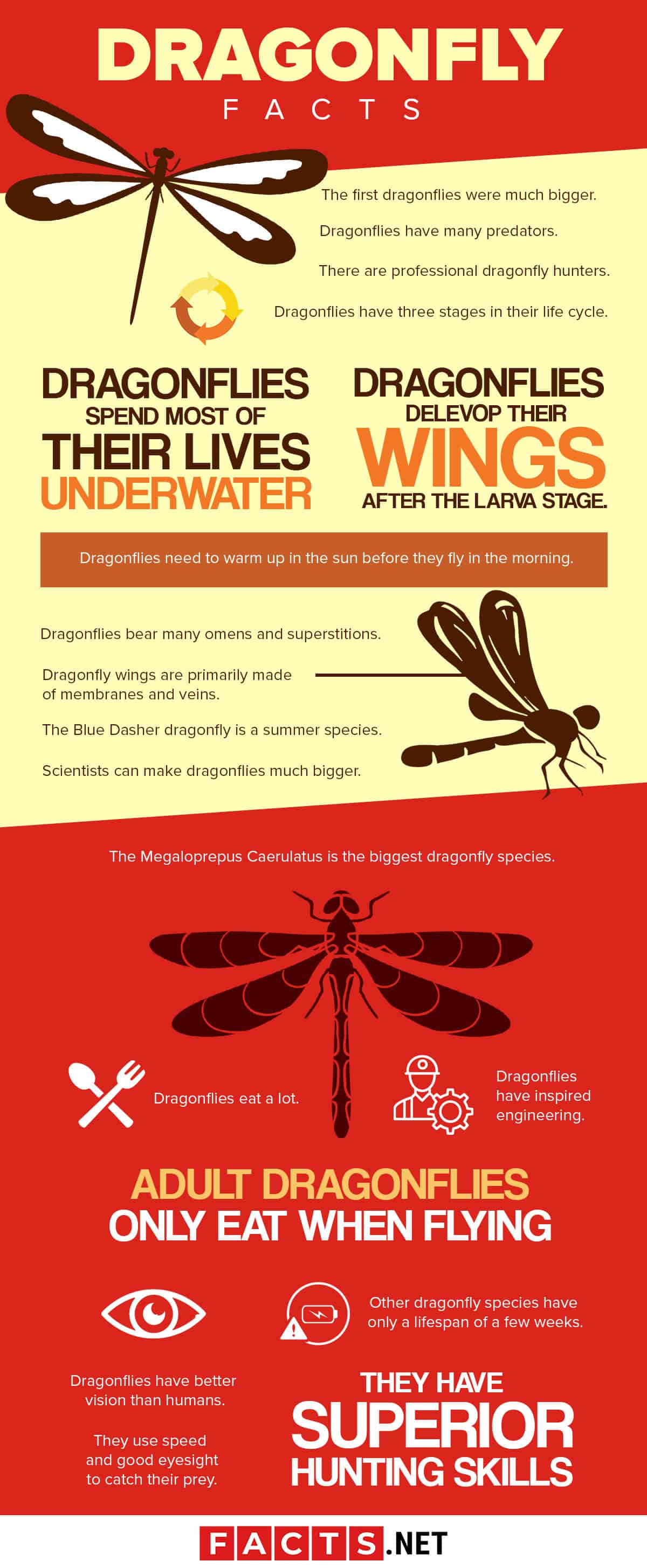
The first dragonflies were much bigger.
Dragonflies were one of the first insects to occupy Earth. Although they may seem small now, dragonflies evolved from much bigger ancestors. According to research, the early dragonflies about 300 million years back had wingspans of two and a half feet. How’s that for crazy dragonfly facts?
Dragonflies have three stages in their life cycle.
The three stages in a dragonfly’s life cycle are the egg, the nymph or larva, and the adult dragonfly. Dragonflies lay their eggs in water. Upon hatching, the larva will remain aquatic for 2 to 5 years depending on the species.
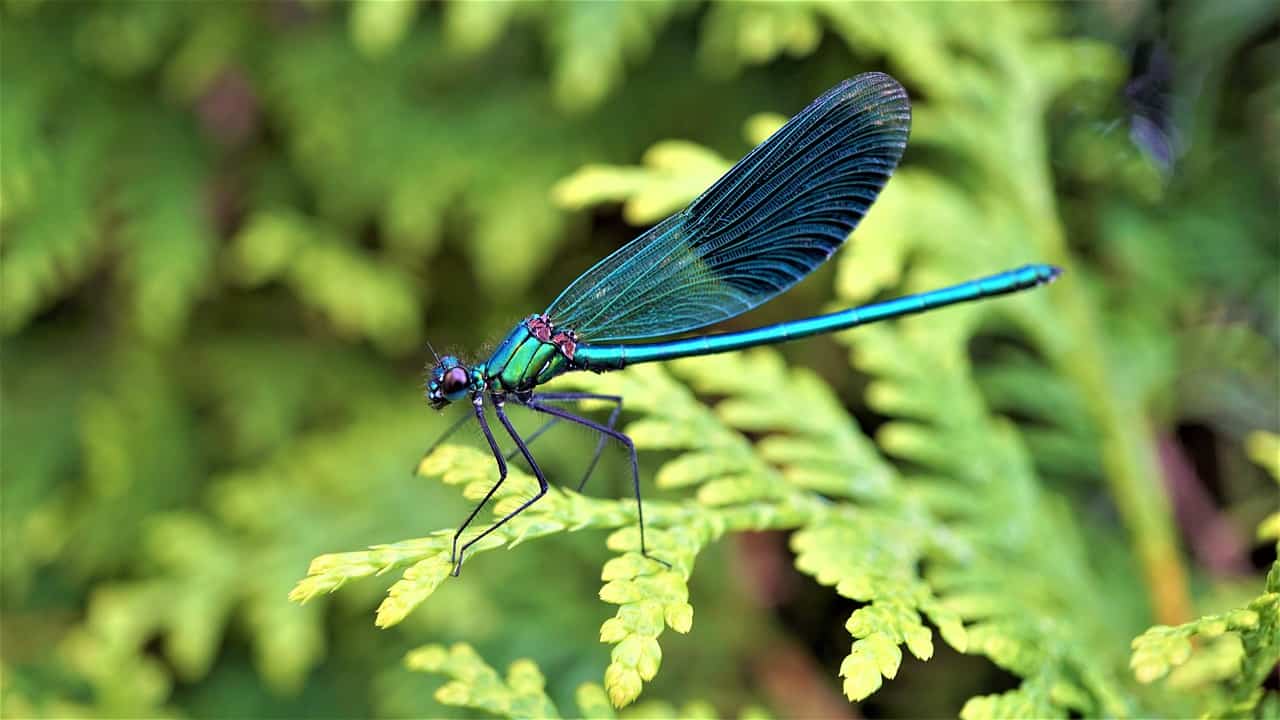
Dragonflies spend most of their lives underwater.
It may sound like one of the ironic dragonfly facts, but it’s true: Since adult dragonflies only live up to 6 months, they end up spending more time in their lives in water than the air.
During this stage, they would breathe using their gills. Dragonfly nymphs eat any underwater creature smaller than them. Some bigger species of dragonfly can even hunt and eat small fish as larvae.
Dragonflies develop their wings after the larva stage.
After the larva stage, they would crawl out of the water with the dragonfly’s exoskeleton cracking open to release its abdomen. During this period, its four wings will start to emerge, drying and solidifying within the next several days.
Dragonflies have many predators.
The main predators of dragonflies are ducks, birds, water beetles, bigger types of fish, and humans.
There are professional dragonfly hunters.
In Indonesia, dragonflies appear to be a popular exotic food. Some people professionally hunt them with various techniques and methods. Fried dragonflies are one of the simplest menus to cook them by using coconut oil. Dragonfly delicacies are widespread not just in Indonesia but also in other parts of Asia.
Dragonflies bear many omens and superstitions.
According to some folklore, seeing swarms of dragonflies signified incoming rain. For some cultures, dragonflies represent good luck and prosperity – especially when it lands on one’s head. How’s that for interesting dragonfly facts?
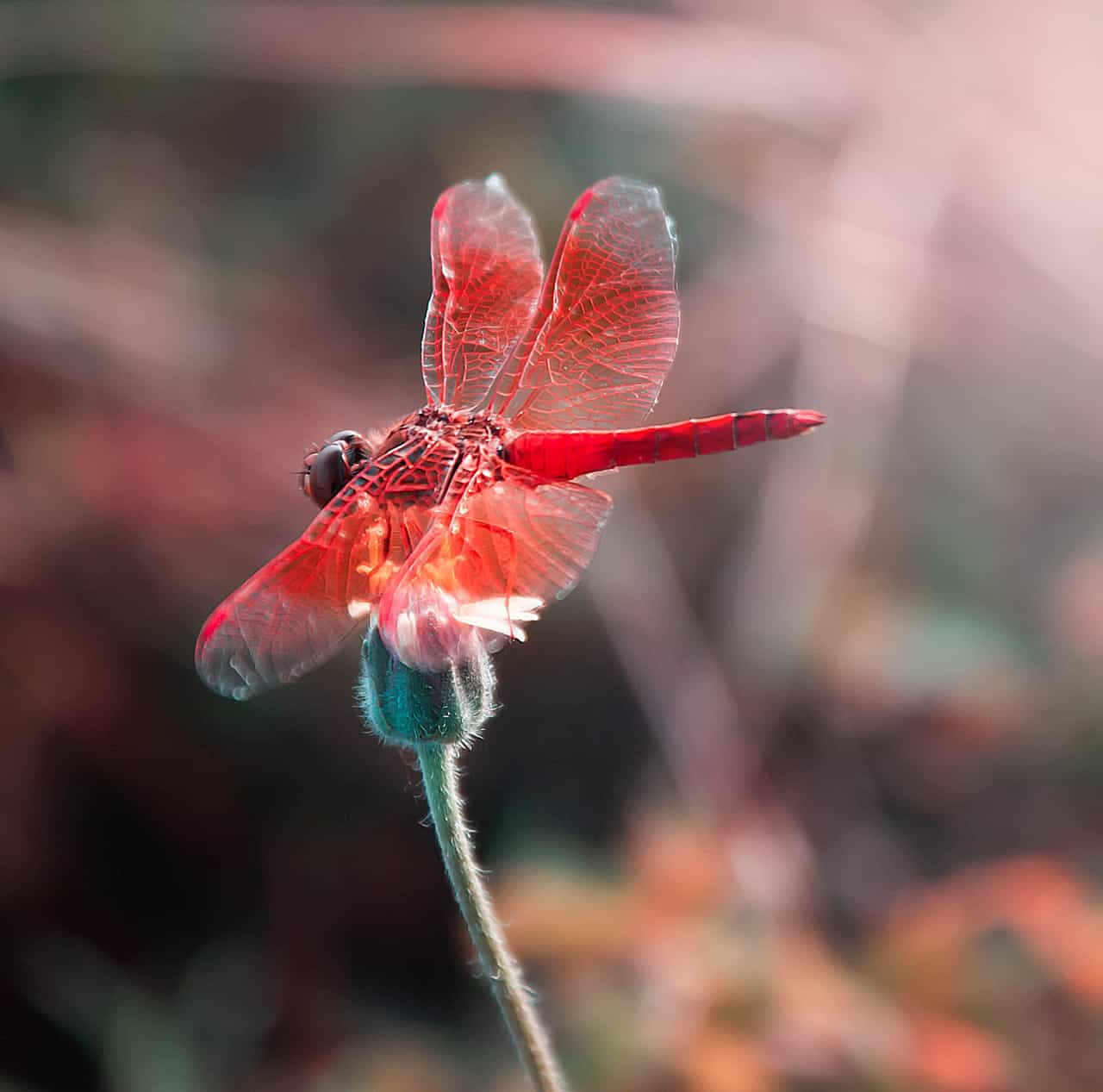
Dragonflies need to warm up in the sun before they fly in the morning.
Before they go active during the day, they need to bask in the sun to warm up since their thorax needs to reach 25°C to be ready for fllight. If the sun is not present, some dragonflies can generate heat by shaking their flight muscles before taking off.
Dragonfly wings are primarily made of membranes and veins.
The wings of the dragonfly provide superior stability with high load-bearing capacity as it flies, glides, and hovers Their wings are made of membranes and veins with a a complex design that provides excellent versatility, agility as well as performing maneuverable fliers.
The Blue Dasher dragonfly is a summer species.
The blue dragonfly also known as the Blue Dasher is an insect of the dragonfly species that belongs to the skimmer family. Mostly found in the United States and the Bahamas, they usually grow from 1 to 1.5 inches on average.
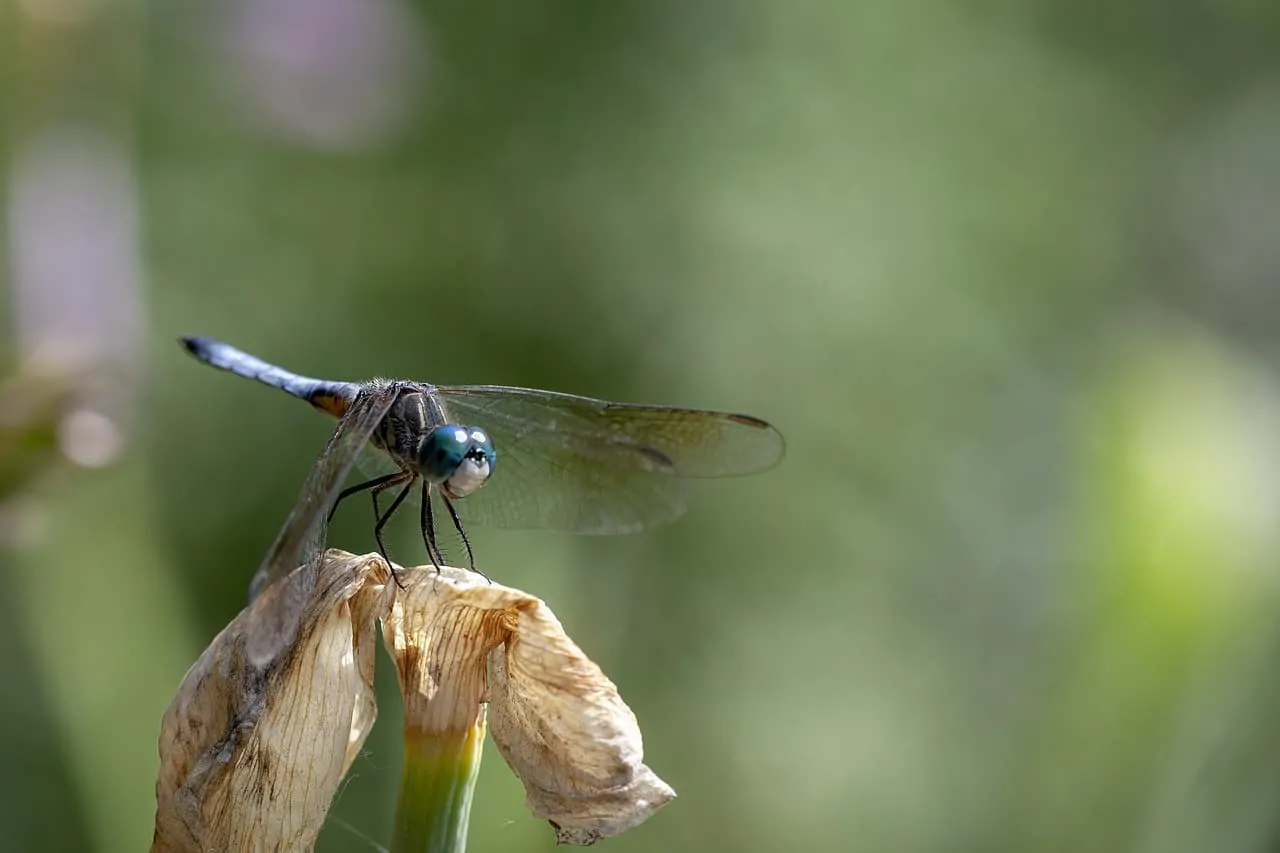
The Megaloprepus Caerulatus is the biggest dragonfly species.
A regular dragonfly can grow for about 2 inches long, but the Megaloprepus Caerulatus can grow as much as 7.5 inches across the wings with a body length of over 4.7 inches. That is twice as much as the common dragonflies.
Scientists can make dragonflies much bigger.
As mentioned above, 300 million years ago, dragonflies are much bigger compared today. Scientists made an experiment by placing dragonfly larva in a test chamber which mirrors the earth’s oxygen levels from 300 million years ago. As a result, dragonflies grew about 15% larger than their normal size.
They use speed and good eyesight to catch their prey.
Dragonflies catch smaller insects when flying. They use their good eyesight and speed to spot smaller insects from a distance. The dragonfly’s legs keep the victim from escaping, which the dragonfly eats in flight.
Adult dragonflies only eat when flying.
Unfortunately, if a dragonfly gets injured and can’t fly anymore, it may starve to death. Thus, they can only catch prey while flying.
Dragonflies have inspired engineering.
The flying skills of the dragonfly are very effective that it has inspired scientists and engineers to make robots, drones and helicopters/aircraft that can maneuver like dragonflies in the future.
Other dragonfly species have only a lifespan of a few weeks.
Although in general, the adults get to live for an average of six months, the lifespan of other species of dragonflies lives only for a few weeks. On the other hand, other species of dragonflies may surpass the average lifespan and live over a year at the most.
Dragonflies have better vision than humans.
Aside from the fact that they can see ultraviolet light, dragonflies can see colors beyond what humans can see. They are also well-versed in motion detection and they can see all directions at once at the same time.
Dragonflies eat a lot.
Just a single dragonfly can eat up to 100 mosquitoes per day. Having two to more dragonflies in the garden or near the house would certainly slow down the mosquito’s population.
They have superior hunting skills.
When a dragonfly attacks its target, it is almost certain that they will catch it. The dragonfly’s strike rate ratio is 95%.
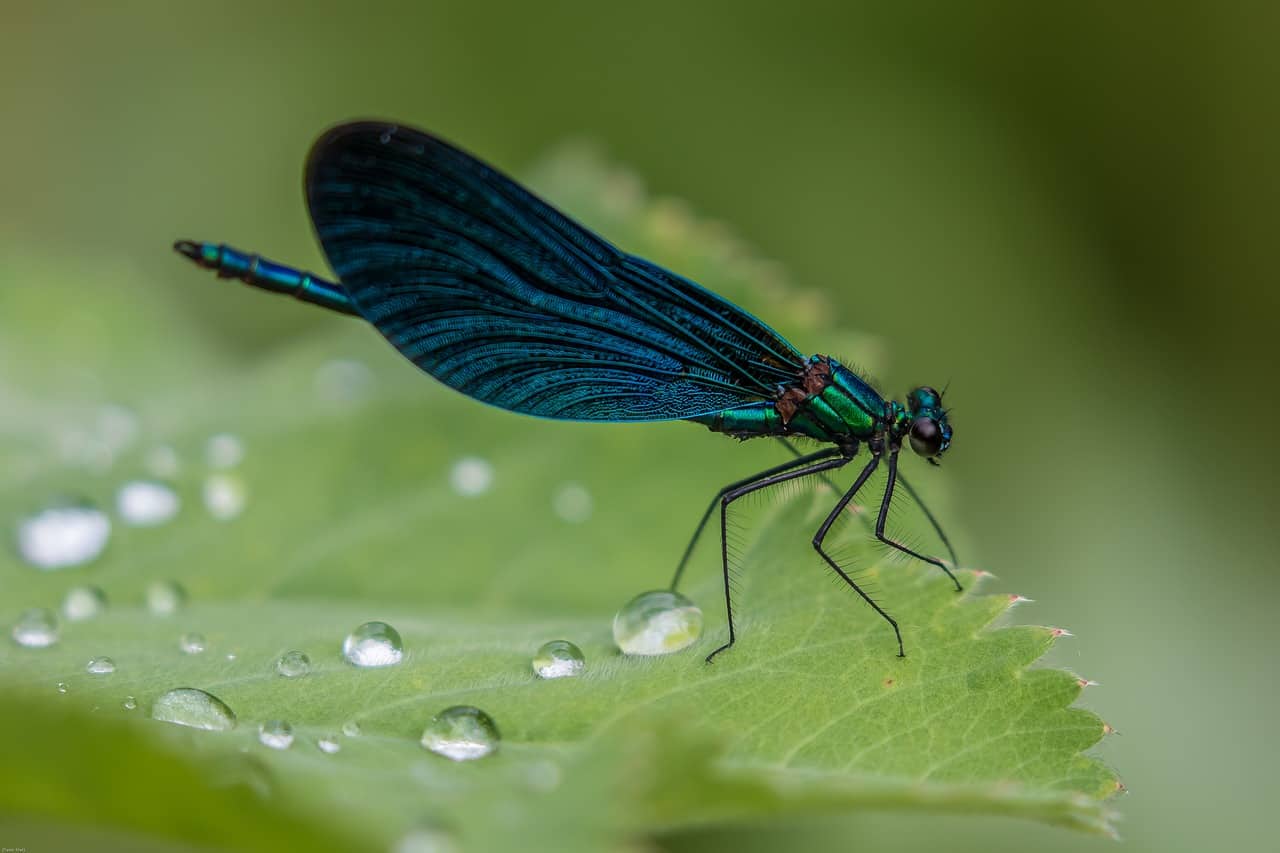
Was this page helpful?
Our commitment to delivering trustworthy and engaging content is at the heart of what we do. Each fact on our site is contributed by real users like you, bringing a wealth of diverse insights and information. To ensure the highest standards of accuracy and reliability, our dedicated editors meticulously review each submission. This process guarantees that the facts we share are not only fascinating but also credible. Trust in our commitment to quality and authenticity as you explore and learn with us.
